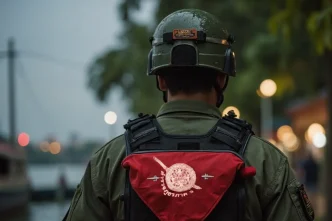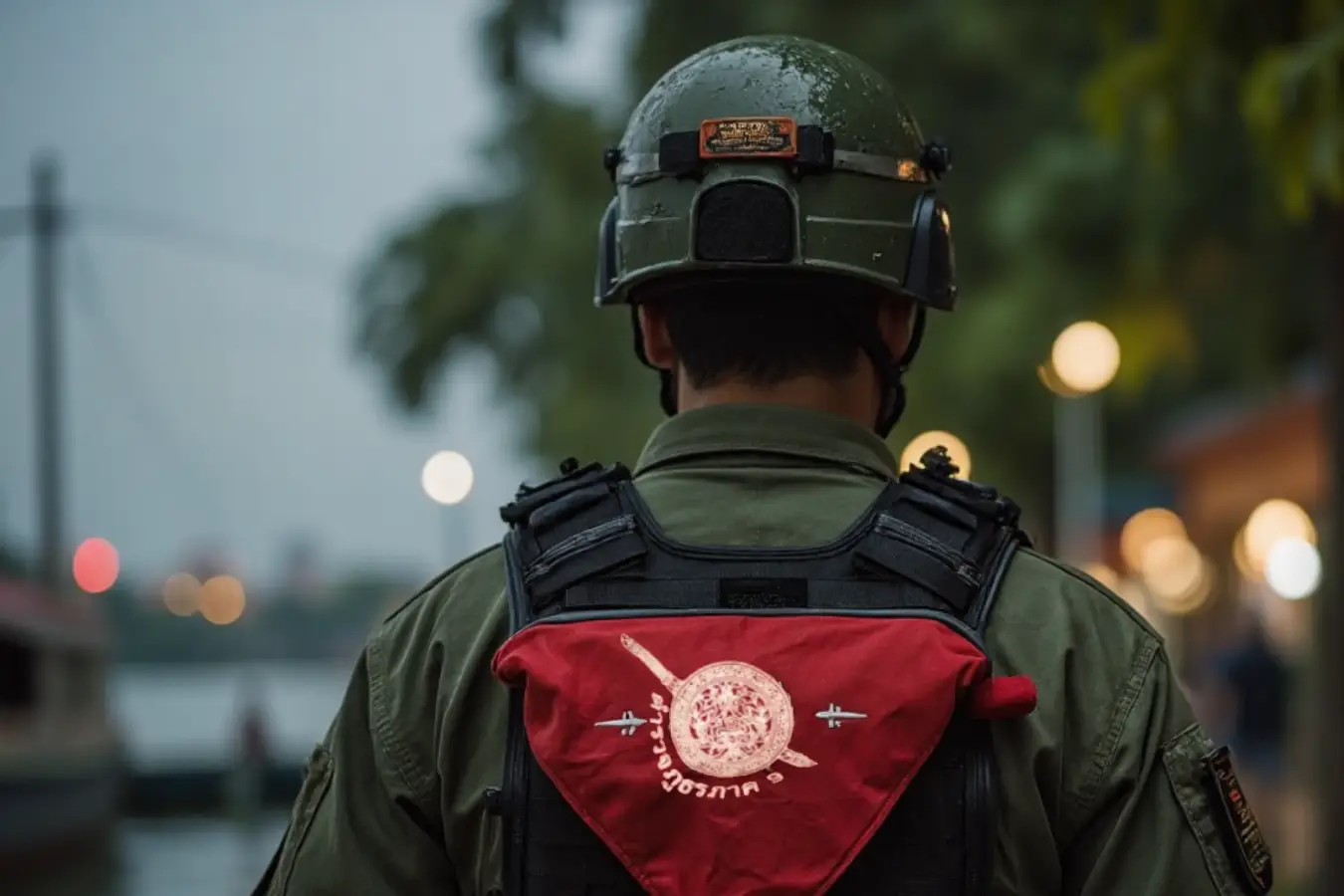Thailand’s military leadership has ordered heightened security measures in the country’s restive southern border provinces, responding to a surge in violent attacks that have increasingly targeted civilians. The directive, issued by Royal Thai Army (RTA) Commander-in-Chief General Pana Klaewplodthuk on May 26, 2025, underscores growing concerns over the safety of local residents in a region long plagued by separatist insurgency.
Urgent Directives for Civilian Protection
General Pana’s orders came during a meeting with commanders at Army Headquarters in Bangkok, where he emphasized the need to implement policies aimed at safeguarding communities in the Deep South. RTA spokesman Major General Winthai Suvari relayed the commander’s instructions, noting that the general urged southern commanders to prioritize civilian safety. “General Pana instructed commanders to ensure that people in the area can live their daily lives in safety” said Winthai, reflecting the military’s renewed focus on protecting vulnerable populations.
The directive follows a visit by Deputy Prime Minister and Defence Minister Phumtham Wechayachai to the region over the weekend prior to May 26, 2025. During his tour, Phumtham delivered policy guidelines to security forces, emphasizing the importance of enhancing protection measures for locals. Winthai highlighted that General Pana’s orders align directly with Phumtham’s vision, signaling a coordinated effort between political and military leadership to address the escalating violence.
Escalating Violence in the Deep South
Thailand’s Deep South, encompassing the provinces of Pattani, Yala, Narathiwat, and parts of Songkhla, has been a hotspot of conflict for decades. The region, predominantly inhabited by ethnic Malay Muslims, has seen a long-running insurgency driven by separatist groups like the Barisan Revolusi Nasional (BRN), who seek greater autonomy or independence from the Thai state. While violence has waxed and waned over the years, recent months have witnessed a marked uptick in attacks, particularly since early 2025.
What is particularly alarming is the shift in targets. Historically, insurgents often focused on security forces and government infrastructure, but recent incidents indicate a troubling trend of civilian casualties. Monks, women, children, the elderly, and people with disabilities have increasingly become victims of the violence. This shift has heightened public fear and raised questions about the insurgents’ evolving tactics and objectives.
One notable incident that underscores the ongoing unrest occurred in Narathiwat’s Muang district on November 23, 2022, when a car bomb exploded outside a police accommodation. The attack, which left streets littered with debris, served as a stark reminder of the region’s volatility. While no specific recent attacks were detailed in the latest military briefing, the cumulative impact of such incidents has clearly prompted the RTA’s latest response.
Stalled Peace Talks and Rising Tensions
The resurgence of violence coincides with a breakdown in peace negotiations between the Thai government and separatist groups. Talks with the BRN and other factions have been intermittent over the past decade, with little progress made in addressing core grievances, including cultural and religious recognition, economic disparities, and political representation. The current impasse has fueled frustration on both sides, with insurgents seemingly resorting to more aggressive tactics to pressure the state.
Analysts suggest that the targeting of civilians may be an attempt to destabilize the region further, undermining public trust in the government’s ability to maintain order. At the same time, heavy-handed responses by security forces have occasionally exacerbated tensions, with allegations of human rights abuses alienating local communities. Balancing robust security measures with efforts to win hearts and minds remains a significant challenge for Thai authorities.
Military Preparedness Beyond the South
While the focus of General Pana’s directive was on the southern provinces, he also addressed broader national security concerns. The commander instructed army units responsible for securing borders in other regions to inspect their personnel and weaponry, ensuring readiness to defend Thailand’s frontiers. This move reflects the military’s recognition that instability in the Deep South could have ripple effects, potentially straining resources and attention needed elsewhere.
Thailand shares porous borders with Malaysia to the south, Myanmar to the west, and Laos and Cambodia to the east. These frontiers have historically been vulnerable to smuggling, human trafficking, and cross-border insurgent activity, particularly in the context of the southern conflict. By bolstering border defenses, the RTA aims to prevent any spillover of violence or exploitation of regional instability by external actors.
Challenges of Civilian Protection
Implementing effective civilian protection measures in the Deep South is no small task. The region’s complex social fabric, marked by ethnic and religious diversity, requires security forces to navigate a delicate balance. Many local residents harbor deep-seated mistrust of the Thai state, rooted in historical grievances and perceptions of marginalization. Military operations, if perceived as overly aggressive or indiscriminate, risk further alienating communities whose cooperation is essential for long-term stability.
Moreover, the insurgents’ shift to targeting civilians complicates the security landscape. Protecting soft targets—schools, markets, temples, and residential areas—demands significant resources and intelligence capabilities. The Thai military has faced criticism in the past for inadequate community engagement and over-reliance on force, issues that General Pana’s directive may seek to address through closer adherence to Phumtham’s policy guidelines.
Economic and Social Impacts of the Conflict
Beyond the immediate security concerns, the ongoing violence in the Deep South has profound economic and social repercussions. The region, already one of Thailand’s poorest, struggles with limited investment and infrastructure development due to the persistent unrest. Businesses are reluctant to operate in areas prone to attacks, while tourism—a key driver of Thailand’s economy—remains virtually non-existent in the affected provinces.
Local communities bear the brunt of these challenges. Families displaced by violence often lack access to education and healthcare, perpetuating cycles of poverty and disenfranchisement. The targeting of vulnerable groups, such as children and the elderly, further erodes social cohesion, leaving lasting scars on the region’s psyche.
Efforts to address these issues have been hampered by the stalled peace process. Without a political resolution, military measures alone are unlikely to deliver sustainable peace. Analysts argue that the Thai government must prioritize dialogue and address underlying grievances, even as it strengthens security protocols. Initiatives to boost economic development and cultural inclusion could also play a critical role in reducing support for separatist movements.
Regional and International Dimensions
The conflict in Thailand’s Deep South is not an isolated issue. Its proximity to Malaysia, where some insurgent groups are believed to have logistical support or safe havens, adds a cross-border dimension to the crisis. Thai authorities have long sought greater cooperation with Kuala Lumpur to disrupt insurgent networks, though progress has been uneven. Any escalation in violence could strain bilateral relations or draw unwanted international attention to the region.
Furthermore, the broader Southeast Asian context—marked by instability in Myanmar and lingering security challenges in the Philippines’ Mindanao region—underscores the importance of containing the conflict. A destabilized Deep South could become a magnet for transnational crime or extremist ideologies, posing risks beyond Thailand’s borders. While there is no evidence linking the southern insurgency to global terrorist networks, the potential for such connections remains a concern for regional security experts.
Public Sentiment and the Path Forward
As the Thai military ramps up its efforts to secure the Deep South, public sentiment in the region remains mixed. Some residents welcome the promise of enhanced protection, particularly in light of recent civilian-targeted attacks. Others, however, express skepticism about the military’s approach, fearing that increased troop presence could lead to further tensions or abuses.
The government faces a critical juncture. While General Pana’s directive and Phumtham’s policy guidelines signal a commitment to addressing the violence, their success will depend on execution and the willingness to pursue parallel political solutions. Restarting peace talks with separatist groups, though fraught with challenges, may be the only way to break the cycle of violence.
For now, the people of Pattani, Yala, Narathiwat, and Songkhla watch and wait, hoping that the latest security measures will bring a semblance of normalcy to their lives. As the situation unfolds, the question looms large: can Thailand’s Deep South find a path to peace, or will it remain trapped in a seemingly endless conflict?















